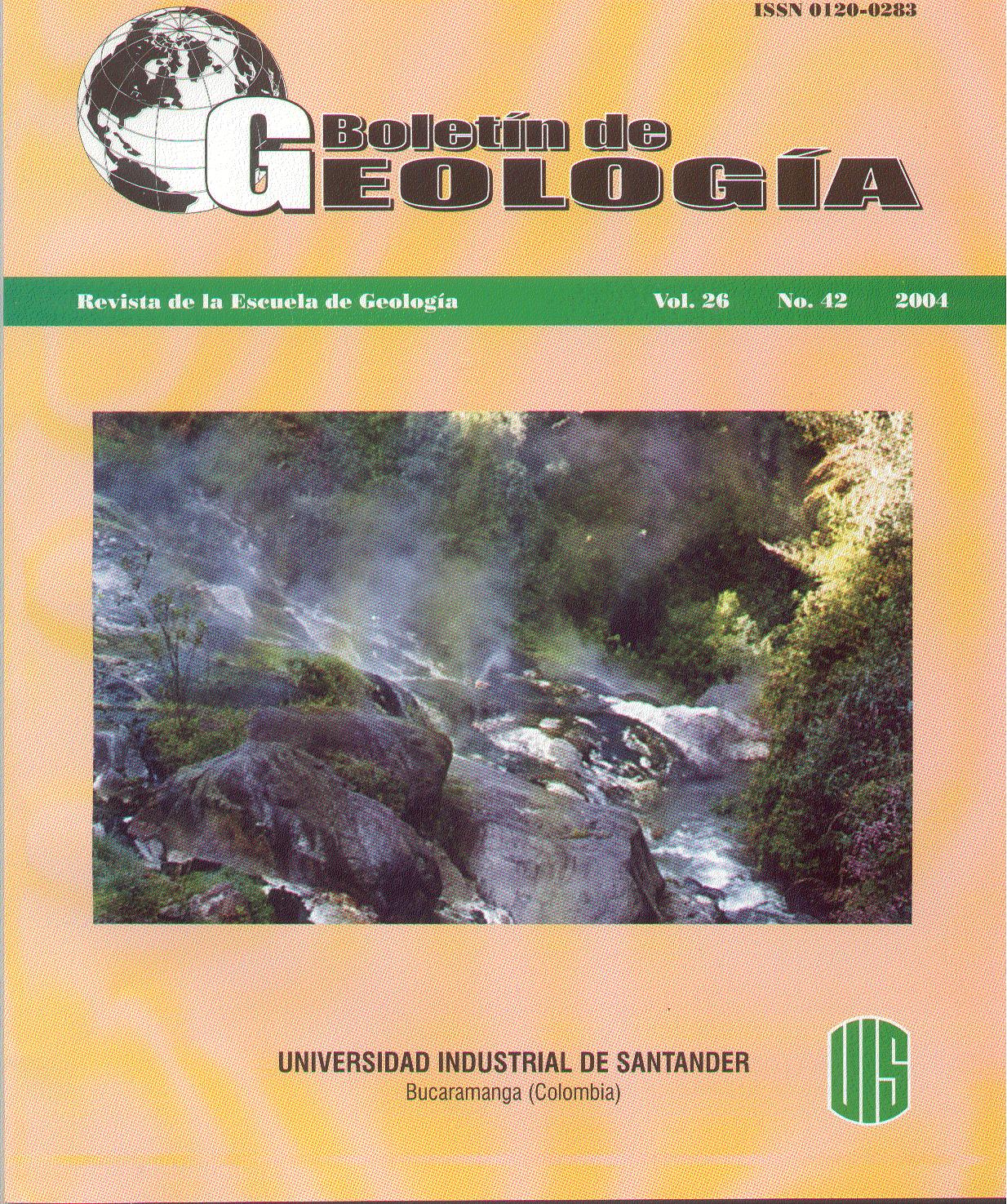Published 2004-03-25
Keywords
- Tectonostratigraphy,
- Lower Magdalena Valley,
- Romeral,
- Carribean,
- Plato
How to Cite
Abstract
The structural and stratigraphic features northern Colombian basins are driven by the interaction of the Southamerican and Caribbean plates, in which the displacement direction have been changing since upper cretaceous times, from a direction almost tangential to the coast line up to an oblique direction in the Tertiary. This change resulted in the accretion of sediments against the continent along the Romeral Fault and the intense fracturing of the continental basement. As a result of this, three periods of tectonostratigraphic evolution are recognized: the first one goes from the Oligocene to early Miocene, characterized by tilted blocks bounded by normal faults with continental sedimentation at the east and shallow marine towards the west. . The second period, early Miocene to Late Miocene, characterized by high subsidence rates due to the isostatic accommodation as a result of the rising of Santander and Santa Marta Massifs (early pulses of the Andean orogeny); marine sedimentation dominated this period. The third period corresponds to the Andean orogenic pulse, recorded in the basin by the Pliocene unconformity, with intense folding and uplift in the Romeral fault vicinity, roll back of the subduction zone and the accretion of the Sinu belt to the continent. The sediments during this last period were deposited in continental environments. The tectonics and stratigraphic features show a multi-history evolution process associated to an oblique collision zone with a first stage of transrotational like basin, followed by compressive and transpressive events associated to the Andean orogeny.
Downloads
References
Case J. E, Holcombe T. L, and Martin R. G. (1984).Map of Geological provinces in the Caribbean Region, in“The Caribean - South American Plate Boundary andRegional Tectonics”, pp 1 - 30
Duque - Caro H. (1991). Contributions to the Geologyof the Pacific and the Caribbean Coastal Areas of NWColombia and South America. UMI Dissertation Services.Michigan. 116 p
ECOPETROL (2000). Página Web Ecopetrol Ronda2000, Valle Inferior del Magdalena
Kellogg J. N., (1984). Cenozoic Tectonic History of theSierra del Perijá, Venezuela – Colombia, and AdjacentBasins. Geological Society of America, Memoir 162.Boulder, Colorado, USA. pp. 239 – 261
Kronemberg H. (1982). Litología, Metamorfismo yOrigen de las Granulitas del Macizo de Garzón, CordilleraOriental, Colombia. Geología Norandina. No. 6. Bogotá.pp. 26 - 43
McDonald, W. D, Hurley, P. M. (1969). Precambriangneisses from northern Colombia, South America.Geological Society of America Bulletin, v. 80, pp. 1867 -1872
Mattson P. H., (1984). Caribbean Structural Breaks andPlate Movements, Geological Society of America,Memoir 162, pp. 131 – 152
Molina J. et al. (1978). Análisis Deposicional yGeohistórico del Noroccidente Colombiano. Ecopetrol.Santafé de Bogotá. 49 p
Nilsen H., Sylverster A, G, (1998). Strike – Slip Basins,in Tectonics of Sedimentary Basins, edit. BlackwellScience, pp. 425 – 457
Pindell, J. (1998). The Colombian Hydrocarbon Habitat:Integrated Sedimentology, Geochemistry,Paleogeographic Evolution, Geodynamics, PetroleumGeology, And Basin Analysis. Tectonic Analysis, Inc.,Ecopetrol, Santafé de Bogotá
Sclater, J. B., Hellinger S., and Tapscott, C. (1977). Thepaleobathymetry of the Atlantic Ocean from the Jurassicto the present: Journal of Geology, v. 85, pp 509 - 552
